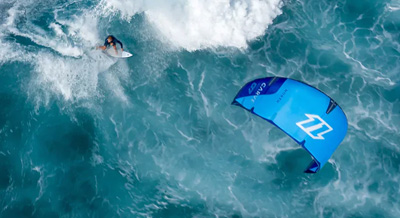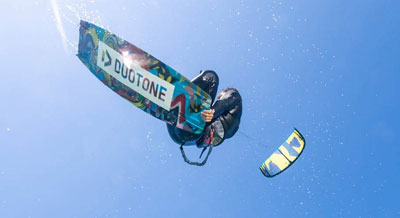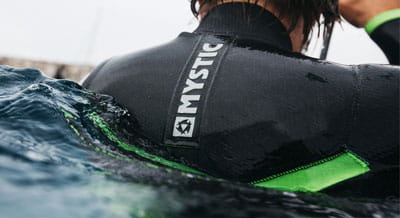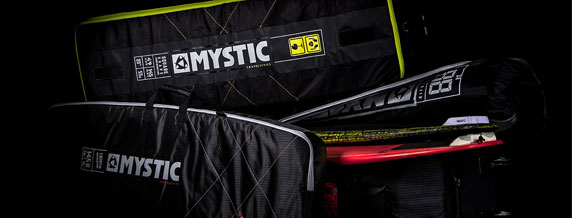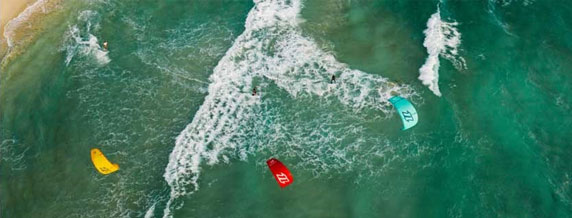22.06.2020
Kite Design Basics
What makes one kite faster than the other? And why can you relaunch some kites super-fast and easy while that is much more difficult with another kite? Each kite model has a different design with different characteristics. If you change the design of a kite just a little bit, the kite can fly very differently. If you want to know more about how a kite works? Then read on quickly.
Bow
The width of the arc of the leading edge has a lot of influence on how a kite flies. Kites with a narrow arc react and turn super-fast. This makes them perfect freestyle and handle-pass kites. Think of all C-kites on the market, such as the Dice or Vegas. Kites with a wide bow react a bit slower but are easier to kite with. Thanks to these properties, these kites are per-fect for beginner kiters. You can also jump and freeride very well with a wider kite.
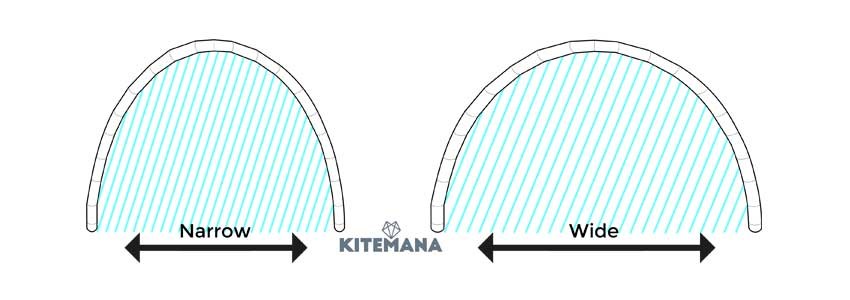
Smaller:
Outline
The outline of a kite consists of the sweep, aspect ratio, and the taper. The sweep describes the angle of the leading edge. The aspect ratio indicates the ratio between the length from tip to tip and the length from the front to the back of the kite. The taper shows how much the tips of the kite expand.
Sweep:The sweep is the angle of the leading edge of the kite. You can have a little sweep and a strong sweep. With a little sweep, the angle of the leading edge is smaller than with a strong sweep. The angle of the leading edge can influence the attack angle of the kite. This can affect the amount of power the kite generates and how easily you can depower the kite.
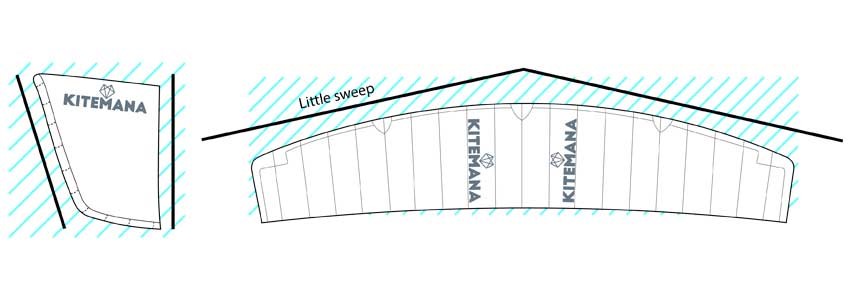
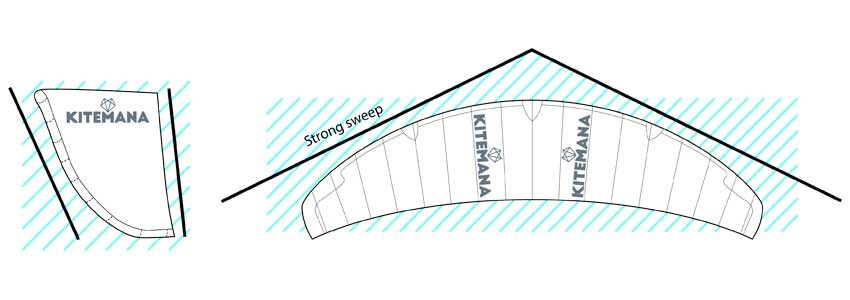
Little sweep:
Aspect ratio:
The aspect ratio of a kite shows the ratio of the length from tip to tip (span) and the length from the front to the back (span). A kite with a low aspect is deeper from the front to the back and the tips are closer together. This makes the kite more stable and easier to kite with. A kite with a low aspect ratio is also easier to relaunch. A kite with a high aspect is wider from tip to tip but less deep from the front to the back. These kinds of kites are often used during racing kiting.
You can easily calculate the aspect ratio of a kite with this formula: span/chord = aspect ra-tio. A kite has a medium to low aspect ratio when the number is around 4.5. If you go more towards 5, your kite has a high aspect ratio. If your answer goes more towards 3, your kite has a low aspect ratio.
You can measure the lengths of your kite in two different ways. When you lay the kite flat on the ground, we call this a flat aspect ratio and when the kite is inflated, we call it a projected aspect ratio. You can easily measure the length from the front to the back (span) by measur-ing the middle strut of the kite. You measure the chord length from tip to tip.
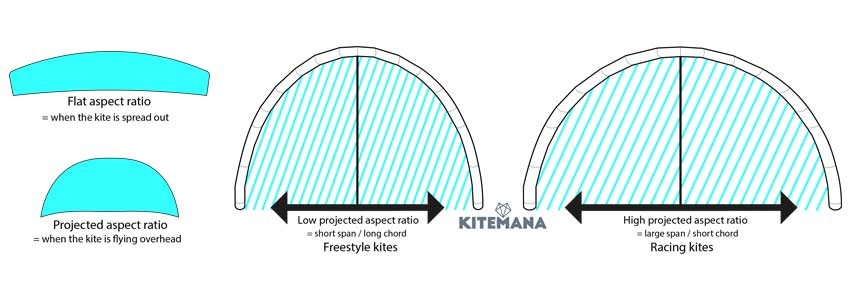
Span:
Chord:
Projected aspect ratio:
Flat aspect ratio:
Taper:
The taper describes how much the tips of a kite expand. The kite's taper has a small influ-ence on the attack angle of the kite on the wind. If the tip is wider, you call it a moderate taper. If a tip is narrow at the end, the kite has a strong taper. The different types of tapers are not related to a particular kite model.
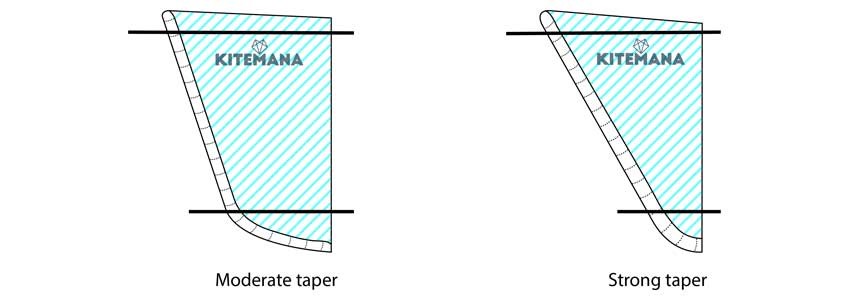
The angle of attack:
The attack angle of the kite has a lot of influence on the power that the kite generates. The kite can have a low angle or a high angle. At a low angle, the kite tends to front stall. At a high angle, the kite tends to back stall. These disadvantages of the angles are balanced by the tow point, the cone, and the leech tension so that you do not experience this when kiting.
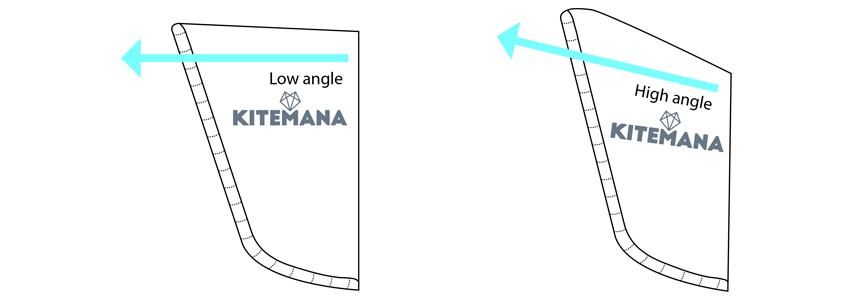
Low angle:
Tow point:
The tow point of a kite has an effect on the depower, bar pressure, back/front stall tenden-cies, drifting, and upwind power. With every kite model, the perfect tow point is sought to bring out the characteristics of the kite model perfectly. The cone, leech tension, and aspect ratio of the kite must also be taken into account. If the tow point is placed towards the back of the kite, you call this tow point back. If the tow point is placed more towards the front of the kite, you call this tow point forward.
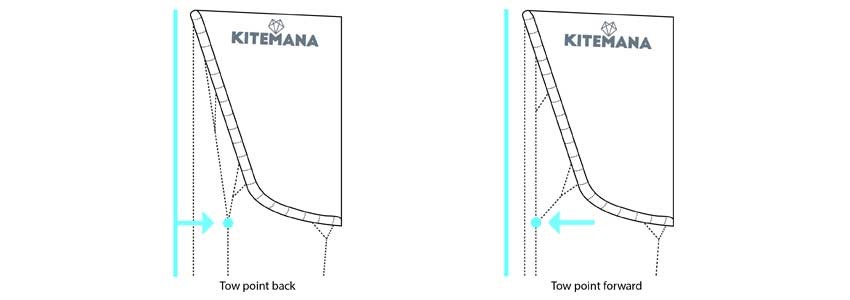
Tow point back:
Cone:
The way the canvas is attached influences the attack angle of the kite. The power of the kite and depower is affected by this. Your kite can have a low cone or a strong cone.
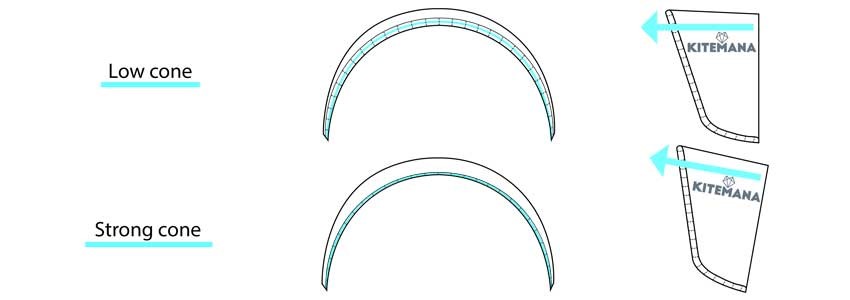
Leech tension:
Leech tension is the tension of the canopy at the trailing edge of the kite. Tensioning the canopy too tightly can cause the trailing edge to curl up. If the canopy is placed too loosely, the canopy of the kite will flap during kiting. The perfect leech tension is sought with every kite model so that the fabric has a perfect tension.
Leading-edge diameter
The width of the leading edge affects the speed, drift, and stability of the kite. The thicker the diameter of the kite, the more power the kite has. A thick diameter also ensures a super good drift and is therefore also super stable and predictable. A kite with a thicker diameter reacts a bit slower than a kite with a thin diameter. A kite with a thin diameter is faster but less stable than a kite with a thicker diameter.
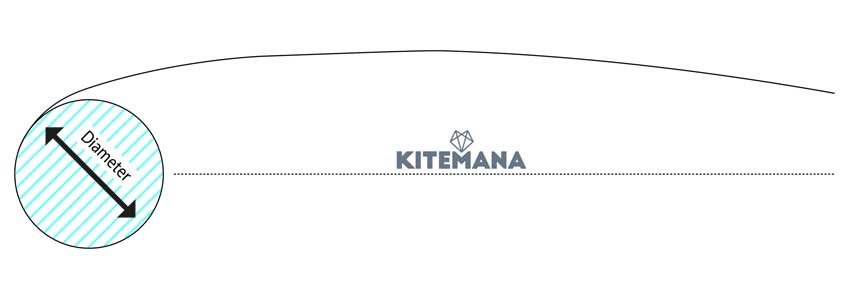
Thicker diameter:
Thinner:
Canopy profile
The canopy profile is the shape that follows the leading edge, strut, and canopy of the kite from the front to the back. This shape influences the flying characteristics of the kite. An example of a profile is the surf profile. This shape ensures that the kite has a good drift. You can often find this shape in wave kites.
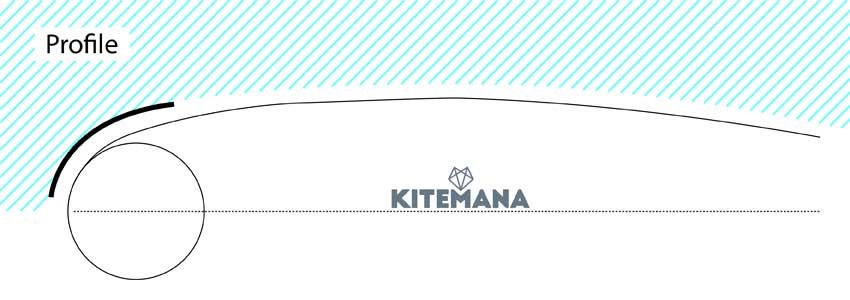
Strut profile
The struts of your kite can be attached in two different ways, fixed or floated. With a fixed strut, the strut is secured to the top of the kite. This ensures that the kite has a good tension so that you get a predictable airflow. With a floating strut, the strut is not secured to the top of the kite. The space between the strut and the canopy is filled with ripstop so that the kite is still controlled by the strut. A floating strut provides more resistance to front stalling, which is especially important with wave kites.
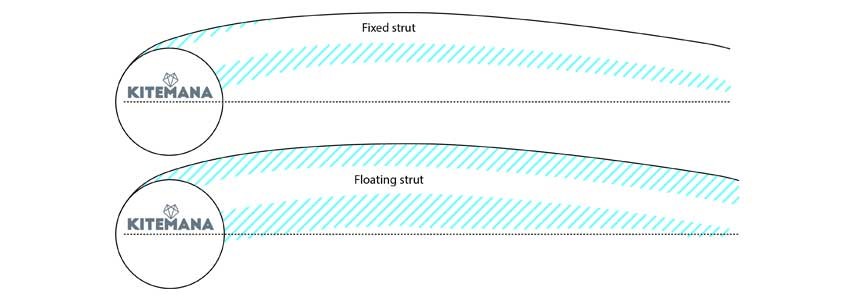
Fixed strut:
Anchor points of the bridles
The number of anchor points of the bridles also varies per kite model. The more anchor points a kite has, the more power the kite can handle. The kite is also more stable if it has more anchor points. You can reduce the diameter of the leading edge to make the kite faster or you can place fewer struts to save weight. If a kite has fewer anchor points, the kite be-comes a lot more flexible but less stable. This can be compensated by placing more struts.
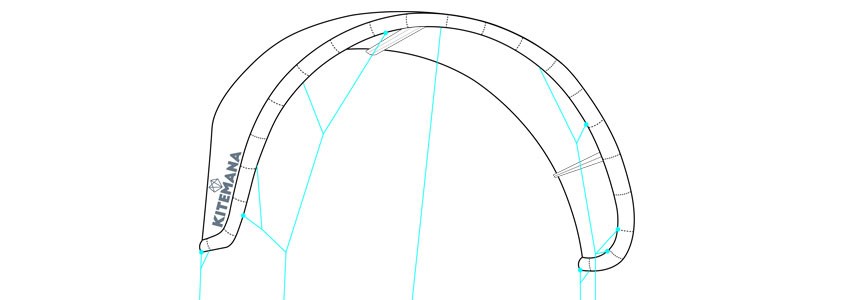
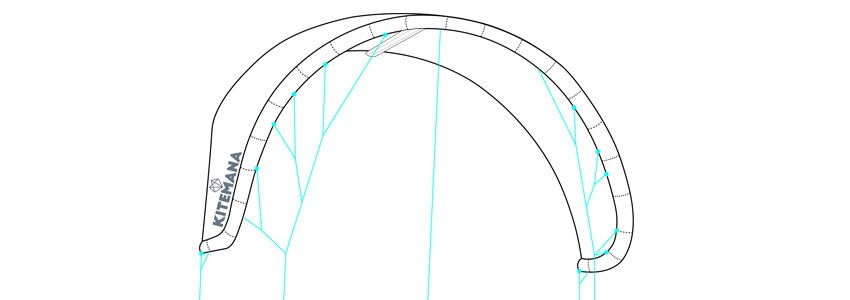
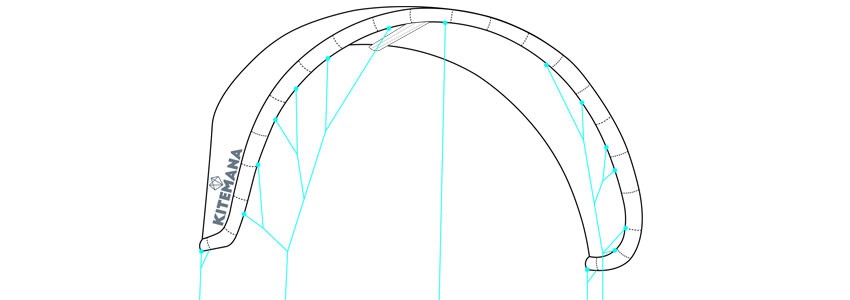
More anchor points:
Number of struts
The struts are super important in a kite. They influence the stability, shape, and weight of a kite model. With a kite with five struts, you can kite very well in strong winds. Because the kite has a lot of struts, the kite is super stable and can handle a lot of power. If your kite has more struts, the kite becomes heavier and you need more wind to keep it in the air. They are therefore not suitable as light wind kites. If you place fewer struts in the kite, your kite be-comes less stable, but you can already kite with less wind. Almost all foil kites have only one strut so that the kite stays well in the air with little wind. You also have kite models with three struts. These are the most common and are exactly between five and one strut kites. The middle strut ensures stability, while the other two struts ensure that you can steer more precisely and that the canopy does not flap.
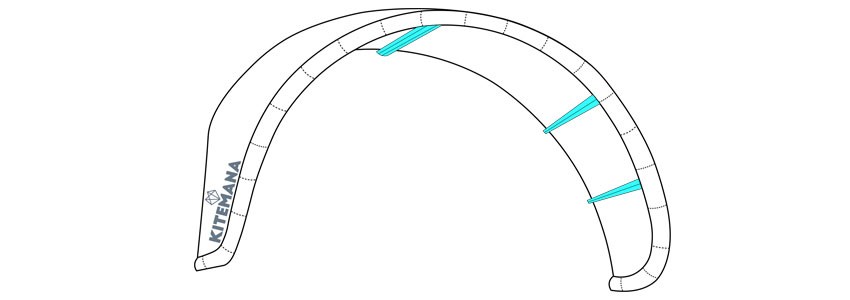
5 struts:
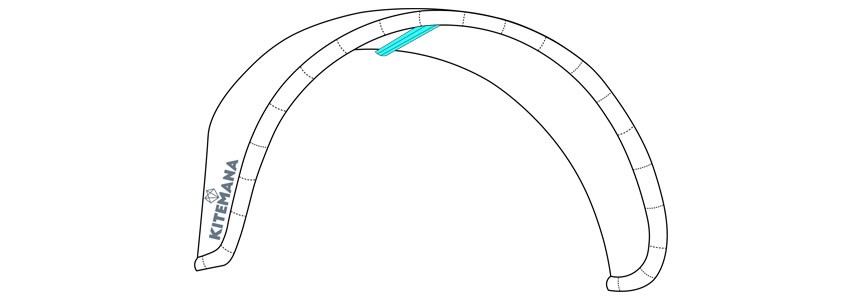
1 strut:
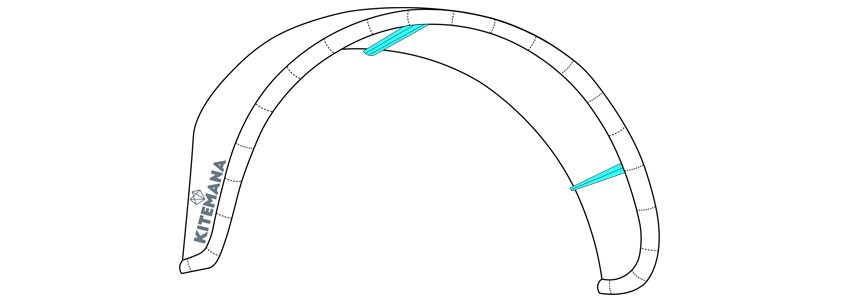
3 struts:
You have no product(s) in you basket.
Weet je niet waar je moet beginner?
Contact our customer service for advice

